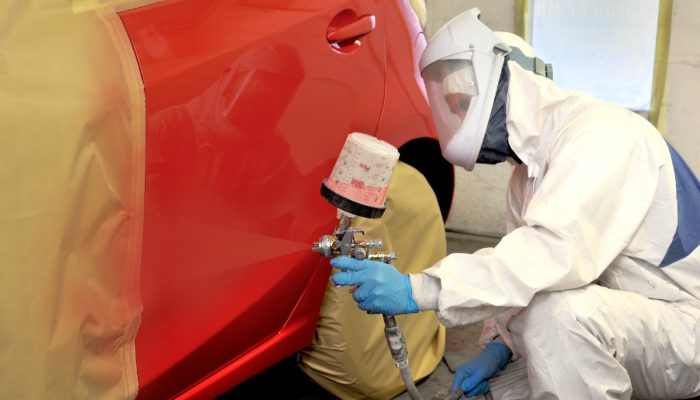One of the most common paint jobs needed is paint blend. Blending paint in is one of the most basic ways to color match paint and paint a car. While it seems simple enough, many people don’t know how to properly blend paint in on their own vehicle so that it looks good and isn’t noticeable. Professional auto body shops can do this for you with high-tech paint mixers, but if you’re not wanting to pay for them to do this small job, then just reading about how to blend paint will suffice.
Blend Area:
The first step before blending paint is determining where exactly you need to blend paint. In order to do this, you must lightly sand your current paint down until some metal shows through. This will be your blending area. You can use a variety of different tools to do this such as an electric sander, sandpaper, etc. It’s important that you take your time and are gentle when sanding so that you don’t damage the paint job any further.
Paint:
The next step is finding a paint that matches your car’s paint color as closely as possible. This can be done at a variety of stores, but it’s best to go to an auto body shop to get an exact color match. Once you have the paint, mix it together with a little bit of paint thinner until it is smooth and consistent.
Application:
Now comes the tricky part – applying the paint blend. First, paint a coat of paint onto the blending area. Do not try to paint over this paint blend in one swipe; it will leave paint lines that show up very obviously. Instead, paint many light coats that overlap into the previous paint when necessary. This may take some practice with an extra can of paint or on another part of your car before mastering.
Once you have done this, go back and apply multiple coats in different directions with enough time in between for each coat to harden slightly (usually 15 minutes). Be sure to sand lightly again after the paint has dried completely (24 hours if possible). You want it to be smooth like your original paint job without any visible scratches or marks. This step is vital because your paint will not look correct if you paint over these fresh paint lines.
If it still does not blend in well with the paint you’re working on, then paint another layer of paint from your paint can into a beaker or bowl and add more paint thinner to thin out the paint slightly. Repeat the application process again.
After completely applying your paint blends, leave it alone for about a week so that the paint job has time to cure and harden before waxing/buffing. Otherwise, you’ll be buffing off your work without proper adhesion!
One thing to keep in mind is that different colors of paint typically require different ratios of good paint blended in when repairing your car. For example, black cars are much harder to paint than lighter colors. As a result, it will require more paint and paint thinner when blending in the new paint so that the two colors match up as closely as possible.
If you don’t want to paint your car yourself, then you can go to an auto body shop for paint blending. These paint jobs are typically more precise and will blend in paint much better than if you try it on your own.
